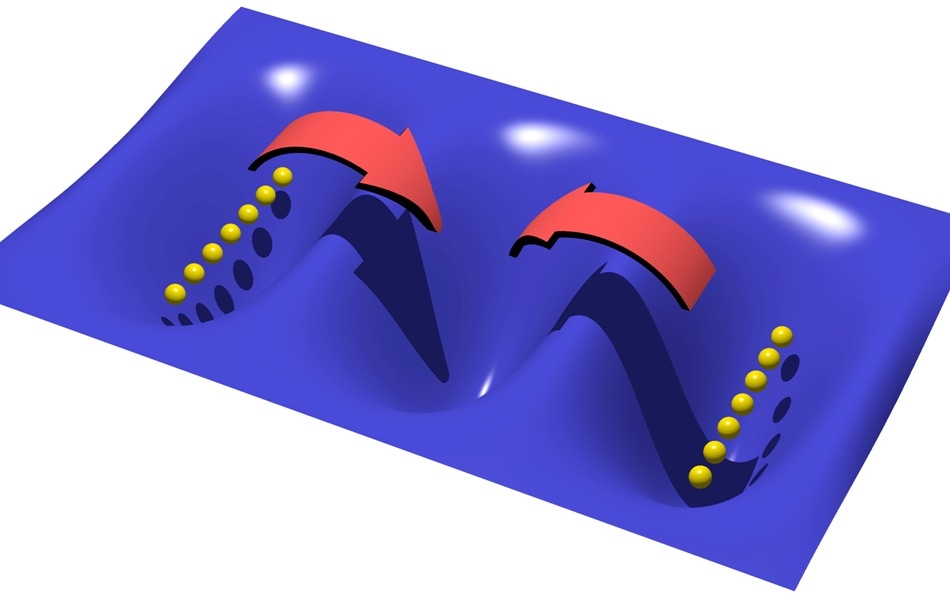Apr 10 2017
A model system that improves the understanding of processes in a quantum-physical experiment with ultracold atoms has been developed by two researchers at Heidelberg University. Prof. Dr Sandro Wimberger and David Fischer from the Institute for Theoretical Physics used computer-assisted methods to discover physical laws that point to this system’s universal properties. The outcomes were featured in the journal “Annalen der Physik”.
 Schematic representation of the filling process: atoms from the external potential wells (represented by the yellow balls) move to the middle well as indicated by the red arrows. Credit: David Fischer
Schematic representation of the filling process: atoms from the external potential wells (represented by the yellow balls) move to the middle well as indicated by the red arrows. Credit: David Fischer
Completely different physical laws are followed by small particles under specific conditions instead of following laws that are already well-known.
Observing such quantum-physical phenomena, however, is sometimes difficult and requires working with small and isolated systems and to investigate those. But perfect isolation from the environment is never possible, so external influences can easily destroy the fragile state of the quantum system.
primary author David Fischer, a student of physics at Heidelberg University.
It is essential to keep such disruptions under control for experiments in this field.
This control enables us not only to ensure the coherence of the system, but it can also be used selectively to effect special conditions.
Prof. Wimberger.
It has been established that ultracold atoms, filled into potential wells, are ideal test objects in several experiments. The atoms are locked in a small area by a barrier generated by a special laser configuration. The atoms “tunnel” from one well into an adjacent one when multiple wells are brought close enough together. The Heidelberg physicists explain that these atoms will be able to move from one to another even though they continue to be trapped in the wells. This quantum-mechanical behavior is favored by the temperature of the atoms, which is only absolute zero at -273.15 °C.
An experiment performed at the Technical University of Kaiserslautern was reproduced by David Fischer and Sandro Wimberger while developing their model system. The investigation concentrated on how cold atoms behaved in a chain of potential wells. The chains were filled with atoms, and following this the researchers emptied the middle well, and observed it getting refilled with atoms from the other wells.
The results of this study suggest that decoherence, i.e. external interference, plays a critical role in this process. What is unclear is which microscopic processes the quantum system uses to interact with the environment.
David Fischer.
As part of their computer-assisted simulation of the refilling process, the researchers tested several hypotheses and even explored which processes truly influenced the way the model system behaved. These researchers observed that the time needed for the refilling process differed based on the parameters of the system. A power law is followed by this duration based on the decoherence rate specified by the two researchers.
In physics, this is often a sign of a universal behaviour of the system that is valid for all scales, hence simplifying the overall problem.
Prof. Wimberger.